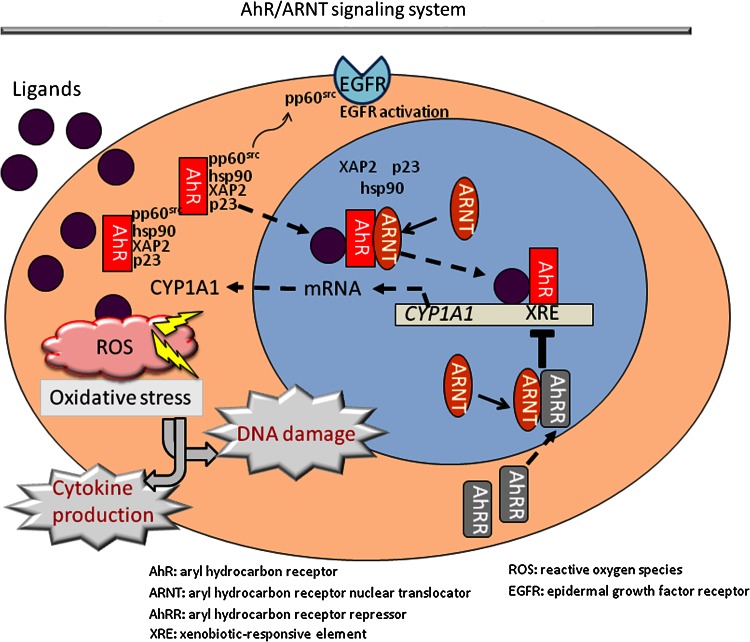Fig. 1.
Schematic representation of the AhR/ARNT signaling system. Aryl hydrocarbon receptor (AhR) resides in the cytoplasm as a protein complex with hsp90, XAP2, and p23. Various external and internal ligands like dioxins, dietary flavonoids, Malassezia metabolites, and ultraviolet light-induced metabolites bind to and activate AhR. Upon ligand binding, ligand–AhR protein complex translocates into the nucleus, where AhR nuclear translocator (ARNT) binds to it, releasing hsp90, XAP2, p23, and pp60src. The ligand–AhR–ARNT complex binds to the xenobiotic-responsive element (XRE) and induces the transcription of responsive genes such as cyp1A1. During the process of metabolism of ligands (e.g., dioxins) by CYP1A1, a large number of reactive oxygen species (ROS) are produced. This ROS generation is closely related to various cellular responses, such as cytokine production and DNA damage. Meanwhile, the dissociated pp60src activates epidermal growth factor receptor (EGFR) and induces its internalization and nuclear translocation. Moreover, the AhR signaling induces the transcription of AhR repressor (AhRR). This induced AhRR forms a heterodimer with ARNT, which competes with AhR/ARNT heterodimer to bind to the XRE sequence, consequently inhibiting AhR transcriptional activity

